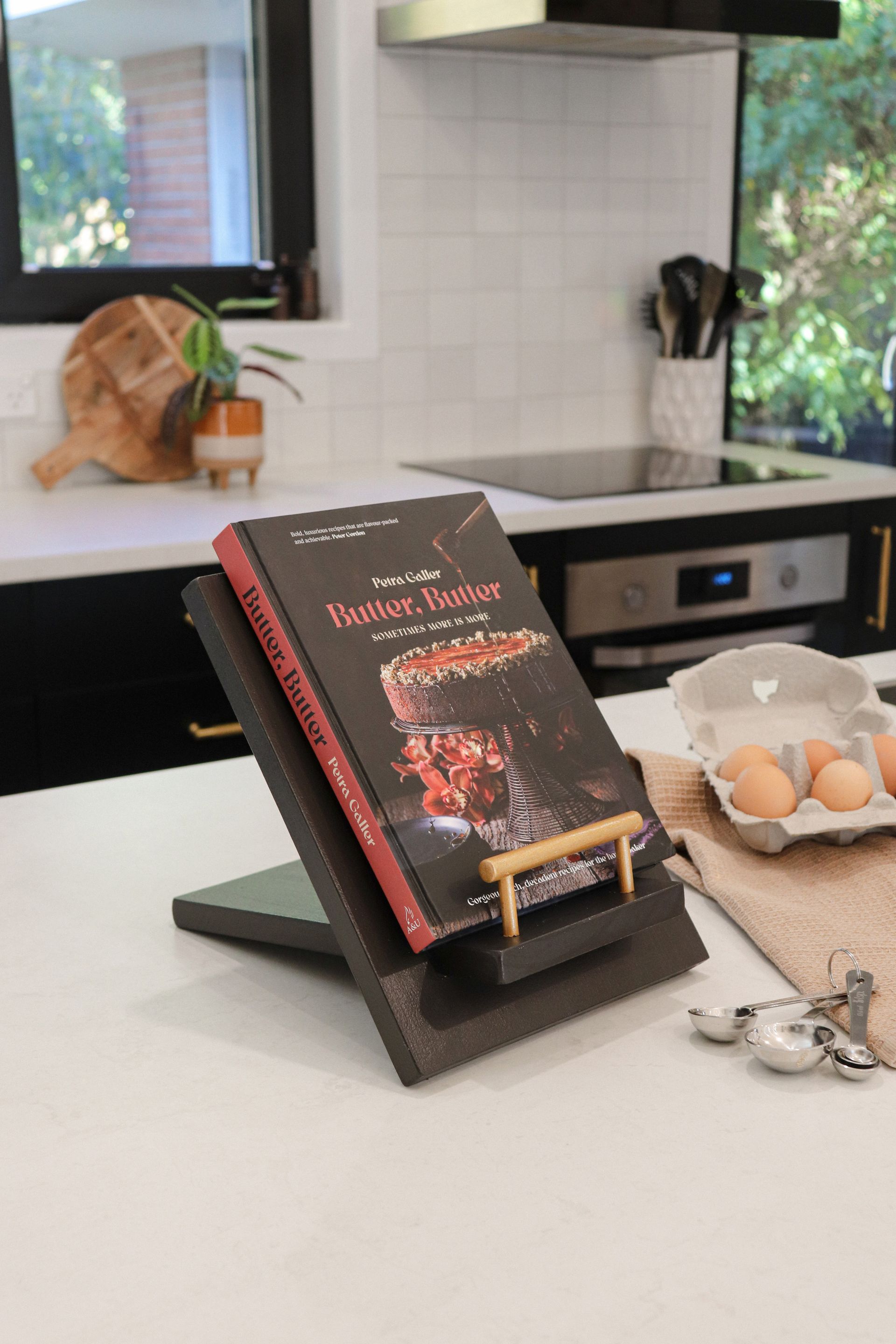With its sliding base, this stand can snugly hold any recipe card, tablet or cookbook – no matter how chunky or slim. Choose your favourite colours to ensure it is the perfect match for your kitchen or as a great gift idea. Plus, when it’s not in use, you can easily store both parts flat!
What you need:
- 1 x 300 x 230 mm sheet of pine board, 18 mm thick (backboard)
- 1 x 300 x 150 mm sheet of pine board, 18 mm thick (baseboard)
- 1 x 120 mm pine dowel, 12 mm thick
- 2 x 40 mm pine dowels, 8 mm thick
- Drill and drill bits
- Drop saw
- Drop sheet
- Jigsaw or reciprocating saw
- Measuring tape
- Paintbrush and mini roller
- Resene testpots – we used Resene Gold Dust and
Resene Apache - Resene Lustacryl semi-gloss waterborne enamel paint, tinted
to your choice of colour – we used Resene Bokara Grey - Resene Quick Dry waterborne primer
- Ruler
- Sandpaper
- Wood glue
Step 1: Cut your wood to the sizes listed above.
Step 2: Measure and mark out a 155 x 25 mm slot, positioned 40 mm up from the base of the backboard, as shown.
Step 3: Drill a hole in each corner of the marked slot to give your saw a starting point. Then, use either a jigsaw or reciprocating saw to carefully cut out the slot.
Step 4: Smooth out any rough edges with sandpaper.
Step 5: To make the handle, drill two 8 mm holes in the 12 mm dowel. Each hole should be drilled three quarters of the way through the dowel, centred and positioned 20 mm from each end. Begin by drilling small pilot holes to guide the larger drill bit.
Step 6: Test-fit the 8 mm dowels to ensure they sit evenly. Apply wood glue to secure them in place.
Step 7: Mark two points on the baseboard, centred and 40 mm back from the front edge. This is where the handle will slot into the baseboard. Use the handle itself as your guide for perfect spacing. Then, drill 8 mm holes at each marked point, starting with pilot holes again.
Step 8: Apply Resene Quick Dry waterborne primer to the two boards and the handle.
Step 9: Apply two coats of Resene Lustacryl semi-gloss waterborne enamel paint to the boards, allowing to dry between coats.
Step 10: Apply a basecoat of Resene Apache to the handle and allow to dry.
Step 11: Apply two coats of Resene Gold Dust metallic paint to the handle, brushing in one direction for the best finish.
Step 12: Assemble your stand by gluing the handle in place and sliding the baseboard through the slot. Place it in your chosen spot on your kitchen bench and enjoy making your next recipe!

Top Tip
If you prefer a natural wood grain look, use Resene Colorwood wood stain in your favourite colour in place of Resene Bokara Grey and finish with Resene Aquaclear.
For more ideas and inspiration, see your local Resene ColorShop, resene.co.nz/colorshops.
Recent stories










